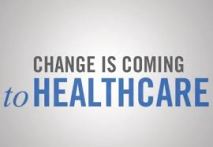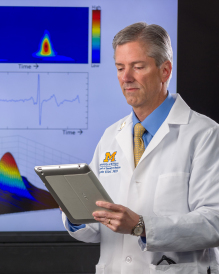 The role of a nurse is a complex one. Not only is this individual responsible for the physical bedside care of multiple patients, but may also be called upon to offer emotional support for patients and their families. While this is an absolute honor and a privilege, it can also be emotionally draining and lead to burnout syndrome or compassion fatigue. In order to ensure that patients receive the highest quality care, we must make sure that nurses have support for their own emotional well-being.
The role of a nurse is a complex one. Not only is this individual responsible for the physical bedside care of multiple patients, but may also be called upon to offer emotional support for patients and their families. While this is an absolute honor and a privilege, it can also be emotionally draining and lead to burnout syndrome or compassion fatigue. In order to ensure that patients receive the highest quality care, we must make sure that nurses have support for their own emotional well-being.
Tag Archives: hospitals
Telehealth Brings Non-Stress Tests to the Home
Non-stress tests (NSTs) are the current standard of care for monitoring high-risk pregnancies. Intended to reduce the risk of stillbirths, these tests are for those who have one or more risk factors, whether they be maternal, fetal or obstetric complications.
Currently, these tests can be very time-consuming for patients. NSTs involve attaching the mother to fetal and contraction monitors to watch the fetal heart rate tracing and uterine activity. However, many rural and remote areas don’t have ready access to NSTs. Consequently, mothers sometimes travel up to several hours each way to get to our facility for their NST appointments once or twice a week. Once they arrive, there’s the usual wait time, the 30-60 minute testing process, plus an additional wait time for the test to be interpreted by a staff member and a clinician. These appointments, on top of any additional prenatal visits the mothers have scheduled, can therefore add up to a considerable amount of time, even for patients who live nearby.
Why 2015 is the Worst Time to be a Physician
With the ONC’s recent release of their 10-year interoperability vision, it might seem like the industry is starting to make things easier for clinicians. In reality, 2015 is starting off to be one of the worst times ever to be a physician. Interoperability is a critical issue to support a transition from fee-for-service to value-based care. Physicians will eventually be reimbursed around their ability to impact clinical outcomes, so the need for clinically relevant information at their fingertips is mission critical.
Healthcare in South Africa – Two Systems, Common Challenges
When it comes to mHealth, most industrialised nations such as the U.S. and Europe have a head start. Money for healthcare technology investments is available, the infrastructure is in place, and most of the population is already engaged in the healthcare system.
As a country of about 52 million people, South Africa shares many characteristics with its larger brethren. There is a mix of public and private healthcare providers and health insurance plans, physician shortages in key areas, and South Africa is beset by many of the same chronic diseases that industrialised countries face (cardiovascular and obesity-related diseases, diabetes, etc.).
Creating a Friendly Environment for Adoption of Clinical Decision Support
In recent years, our ability to stream large amounts of data in real-time has improved dramatically. This enhancement can transform how clinicians offer care by sourcing unprecedented opportunities for clinical decision support. However, the capability to process, store, and display data in and of itself does not transform care. Rather, it is how the clinicians adopt and apply decision support that will make all the difference to patients. However, the current environment must be altered to create a clinical decision support-friendly climate.
The Healthcare Dinner Party
 It may not be obvious, but the healthcare industry has been preparing for an enormous dinner party. Over the last several years, innovation vendors like AirStrip have been adding ingredients to our fridges and pantries based on numerous requests from customers. Metaphorically, this would be just about anything you can imagine that will transform clinical collaboration. At this point, companies can support a wide variety of different use cases across the continuum of care. However, the next phase is for healthcare industry to sit down at the table since it has been set up already for the big dinner party. The table and the settings are the EMRs, EHRs, medical device companies, among others. If we keep replacing them we will starve to death. Now, we need to spend more time figuring out what exactly the healthcare providers are trying to cook – getting to know their specific use cases by clinical service lines and working backwards with the ingredients that already exist, rather than waiting for food to appear magically at the table.
It may not be obvious, but the healthcare industry has been preparing for an enormous dinner party. Over the last several years, innovation vendors like AirStrip have been adding ingredients to our fridges and pantries based on numerous requests from customers. Metaphorically, this would be just about anything you can imagine that will transform clinical collaboration. At this point, companies can support a wide variety of different use cases across the continuum of care. However, the next phase is for healthcare industry to sit down at the table since it has been set up already for the big dinner party. The table and the settings are the EMRs, EHRs, medical device companies, among others. If we keep replacing them we will starve to death. Now, we need to spend more time figuring out what exactly the healthcare providers are trying to cook – getting to know their specific use cases by clinical service lines and working backwards with the ingredients that already exist, rather than waiting for food to appear magically at the table.
Future of Health Care: Keeping the Patients in Mind
 The key to successful health care technology is making sure it improves both the patient experience and the quality of care. While technology is sometimes seen as a barrier to human connection and interaction, the right tools can transform the health care experience for the patient. At Dignity Health, our focus for 2015 is centered on making population health a reality by looking toward the ambulatory side of care. The mobility strategy we put in place in 2014 is enabling us to empower our providers and care teams with telehealth solutions so they can have alternate ways to connect with and care for their patients.
The key to successful health care technology is making sure it improves both the patient experience and the quality of care. While technology is sometimes seen as a barrier to human connection and interaction, the right tools can transform the health care experience for the patient. At Dignity Health, our focus for 2015 is centered on making population health a reality by looking toward the ambulatory side of care. The mobility strategy we put in place in 2014 is enabling us to empower our providers and care teams with telehealth solutions so they can have alternate ways to connect with and care for their patients.
Transformation in 2015: Focusing Technology on the Patient
 We are currently experiencing the biggest transformation in healthcare ever. Technology plays a significant role as an enabler of this transformation, but will not drive it alone. Improving patient care and driving toward patient engagement are crucial goals in this next phase of the healthcare industry. To make adoption ubiquitous and implementation effective, there are several things we should focus on as we dive into 2015:
We are currently experiencing the biggest transformation in healthcare ever. Technology plays a significant role as an enabler of this transformation, but will not drive it alone. Improving patient care and driving toward patient engagement are crucial goals in this next phase of the healthcare industry. To make adoption ubiquitous and implementation effective, there are several things we should focus on as we dive into 2015:
Harnessing the Power of Big Data with Digital Health Partnerships
 In today’s digital world, electronic patient data is growing exponentially and moving faster than healthcare organizations can imagine. At the same time, clinicians suffer from information overload, and high-volume and increasingly complex clinical patient loads, alongside dwindling time and resources.
In today’s digital world, electronic patient data is growing exponentially and moving faster than healthcare organizations can imagine. At the same time, clinicians suffer from information overload, and high-volume and increasingly complex clinical patient loads, alongside dwindling time and resources.
Now more than ever, the pressure is building to harness the power of big data and digital technologies to help clinicians make faster, patient-centric decisions that increase quality of care and enhance health outcomes all while decreasing costs.
Data, Data Everywhere and Not a Drop to Drink
 Clinicians want two things from data. On an individual patient level, they need to be able to see the data whenever and wherever they want – in a clean at-a-glance format and with essentially zero lag time. And at a cohort (population) level, they want the data presented as meaningful information in a way that enables conclusions, decisions, and actions about a group of patients.
Clinicians want two things from data. On an individual patient level, they need to be able to see the data whenever and wherever they want – in a clean at-a-glance format and with essentially zero lag time. And at a cohort (population) level, they want the data presented as meaningful information in a way that enables conclusions, decisions, and actions about a group of patients.
These statements may seem like self-evident Data 101 to many of you, but in my decades of experience working clinically as an emergency physician and being responsible for operations of multiple emergency departments, it is clear that we have not delivered on this vision. In fact, the healthcare world lags other industries by 15-20 years in the availability, presentation, and use of information. Although our industry is catching up, there is still more effective use of information technology in banking, aviation, on-line retail, and a multitude of other industries. Even though many of the concepts of optimum presentation and use of data have been around for decades – the quest for electronic health records began in the 1980s – their breadth of execution and the realization of their value propositions have not been sufficient to become the norm. Healthcare has moved at a glacial speed of change, at least until recently.
